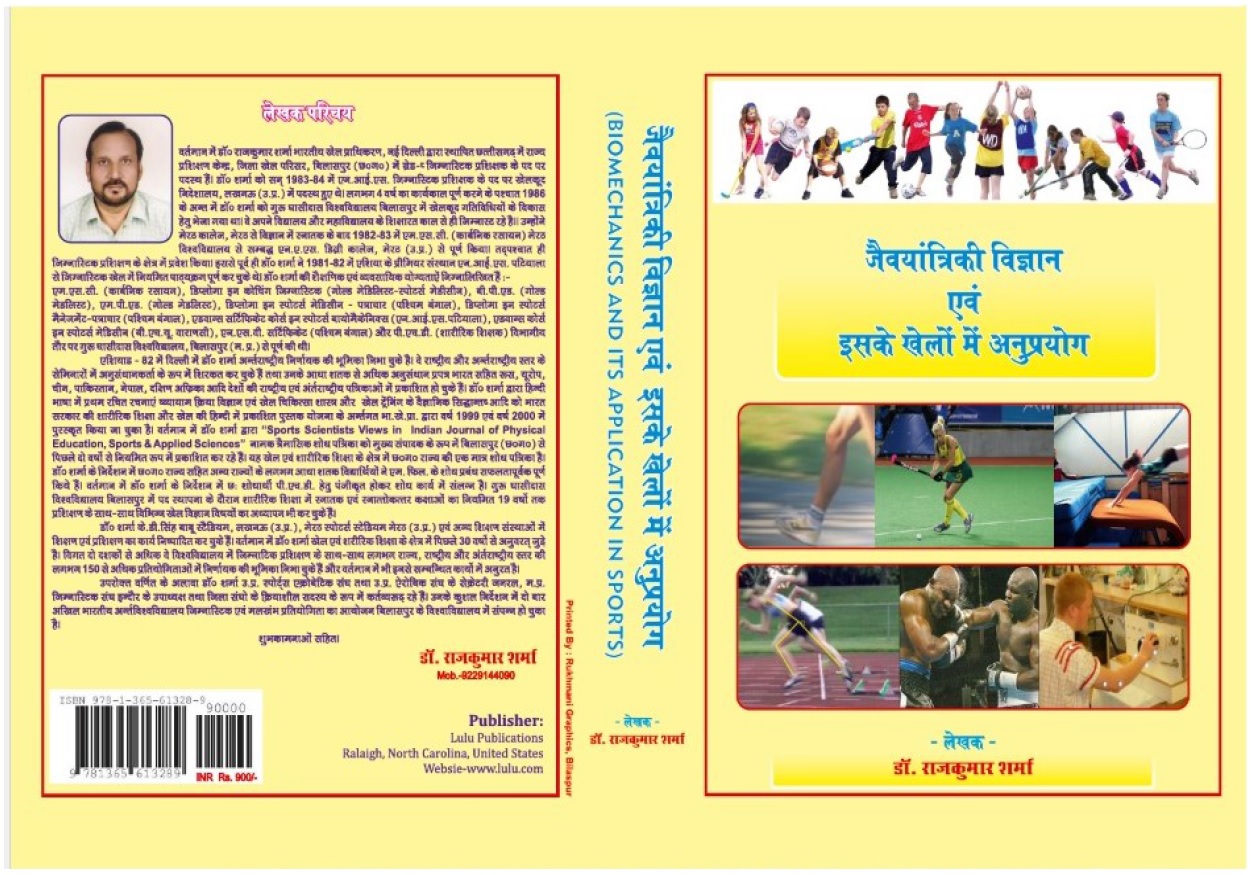| S.No. | Total View Count | Title of Manuscript | Page No | Download/ PDF |
|---|---|---|---|---|
| 1 | EFFECT OF PLYOMETRIC TRAINING ANDPLYOMETRIC COMBINED WITH WEIGHT TRAINING ON SELECTED SKILL PERFORMANCE VARIABLES OF KABADDI PLAYERS Author: Dr. Aranga Panbilnathan 1& Dr. K. Palanisamy 2 | 27-32 |  15 15 |
Article info
doi no.: 05-2016-44975451,
DOI Link :: https://doi-ds.org/doilink/12.2021-98965727/IJPESAS/05.2016-44975451/V11/I4/A4
AFFILIATIONS:
- Director of Physical Education, Government Arts and Science College, Vanur, Thiruchitrambalam Kootroad - 605111. Email: apanbil@gmail.com
- Director of Physical Education, Government Arts College for men, Nandanam, Chennai - 600035. Email: ms.kpalanisamy@rediffmail.com
To achieve the purpose of the study, forty-five men native Kabaddi players were selected as subjects. The age, height, and weight of the subjects ranged from 16 to 18 years, 1.63 to 1.76meters and50 to 65 kilograms respectively. The subjects selected were randomly assigned into three equal groups of Fifteen subjects each. Group I (P.T) underwent plyometric training, group II (CPW) underwent plyometric training combined with weight training and group III (CG) acted as a control. The independent variable in the present study was Plyometric training (PT), Plyometric training Combined with Weight Training (CPW). The dependent variable in the present study was Moving Toe touch performance. Based on the pilot study the training schedule for plyometric training and combined plyometric training with weight training with 1rm respectively. The experimental groups underwent their respective training program 3 days for a week for twelve weeks in addition to their regular lifestyle activities. Group–II involved on plyometric training (P.T), Intensity starting from low to high at 60-foot contact to at 110-foot contact with 10 to 14 repetitions and 2 to 3 sets followed from the first week to twelve weeks. the data collected from the three groups prior to and post experimentation on selected dependent variables were statistically analyzed to find out the significant difference if any, by applying analysis of covariance (ANCOVA). Since three groups were involved, whenever the obtained ‘F’ ratio for adjusted post-test means was found to be significant, the Scheffe’s test was applied as a post hoc test to determine the paired mean differences. In all the cases level of confidence was fixed at 0.05 for significance. The plyometric training combined with weight training was good enough to develop the Moving Toe touch skill performance.
Keywords: Plyometric training, weight training, Kabaddi Players, Toe touch performance.
References
Adams, K., K. O’Shea, L. O’S Hea, and M. Climstein.(1992). The effect of six weeks of squat, plyometrics and squat-plyometric training on power production. J. Appl. Sport. Sci. Res. 6:36–41. 1992.
Baechle, T. and Earle, R. (2000). Essentials of Strength Training and Conditioning (2nd Edition), Champaign, Human Kinetics.
Bobbert, M.F., Gerritsen, K.G.M., Litjens, M.C.A., Van Soest, A.J. (1996). Why I countermovement jump height greater than squat jump height? Medicine & Science in Sport & Exercise, 28(11), 1402-1412.
Cronin, J.B., McNair, P.J., and Marshall, R.N. (2002). Is velocity-specific strength training important in improving functional performance? Journal of Sports Medicine and Physical Fitness, 42(3). 267-273.
Ebben, William P. and Watts, Phillip B. (1998). A Review of Combined Weight Training and Plyometric Training Modes. J Strength Cond Res., 20 (5), 18-27
Fleck and Kraemer (2004) Designing Resistance Training Programs. (3rd Edition). Champaign, IL. Human Kinetics
Fatoyros, I., A. Jamourtas, D. L Eontisini, K. T Axildaris, G. Ageloysis, N. K Ostopoylos, and P. Buckenmeyer (2000). Evaluation of plyometric exercise training, weight training, and their combination on vertical jumping performance and leg strength. Strength Cond. Res., 14, 470–476.
Jain, Aashish Kumar., Tiwari, Madhusudan., Jain, Aakanksha., and Naqvi, Saleem Akhtar (2015). The effect of six weeks plyometric training on agility in male basketball players. IJTRR, 4 (4), 183-190.
Keogh, Justin W, and Paul W Winwood. (2017) “Report for: The Epidemiology of Injuries Across the Weight-Training Sports”. Effects of Antineoplastic Drugs Reports, 3(20), 2584-2610.
Kotzamanidis, C., Chatzopoulos, D., Michailidis, C., Papaiakovou, G., and Patikas, D. (2005). The effect of a combined high intensity strength and speed training program on the running and jumping ability of soccer players. Journal of Strength and Conditioning Research, 19(2), 369-375.
Nurper, Ozbar. (2015). Effects of Plyometric Training on Explosive Strength, Speed and Kicking Speed in Female Soccer Players. Anthropologist, 19(2), 333-339.
Ramesh, C., (2015). Effect of plyometric training on selected motor components among football players. Journal of Recent Research and Applied Studies. 2 (12): 84-87.
Saeed Changizi Ashtiyani., (2015). The effect of short-term plyometric training program on sprint, strength, power and agility performance in non-athletic men. Biosciences Biotechnology Research Asia, 12 (2), 1389-1395.
Senthil, P., (2015). Effects of plyometric training on physical and physiological parameters. Asian Journal of Science and Technology, 6 (12), 2113-2116.
Sharma , Rajkumar & Banne,. Vishal .O. (2015). Effects of different training modalities on aerobic and anaerobic capacity of soccer players. The Swedish Journal of Scientific Research , . 2( 6), . 10-17
Thakur, Jaswant Singh., Mishra, Mukesh Kumar., and Rathore Vishan Singh (2016 ). Impact of plyometric training and weight training on vertical jumping ability, Turkish Journal of Sport and Exercise, 18 (1 ), 31-37.
Tricoli, Valmor., Lamas, Leonardo., Carnevale, Roberto., and Ugrinowitsch, Carlos (2005). Short-term effects on lower-body functional power development: weightlifting vs. vertical jump training programs. J Strength Cond Re
 admin@sportscientistsviews.com
admin@sportscientistsviews.com





